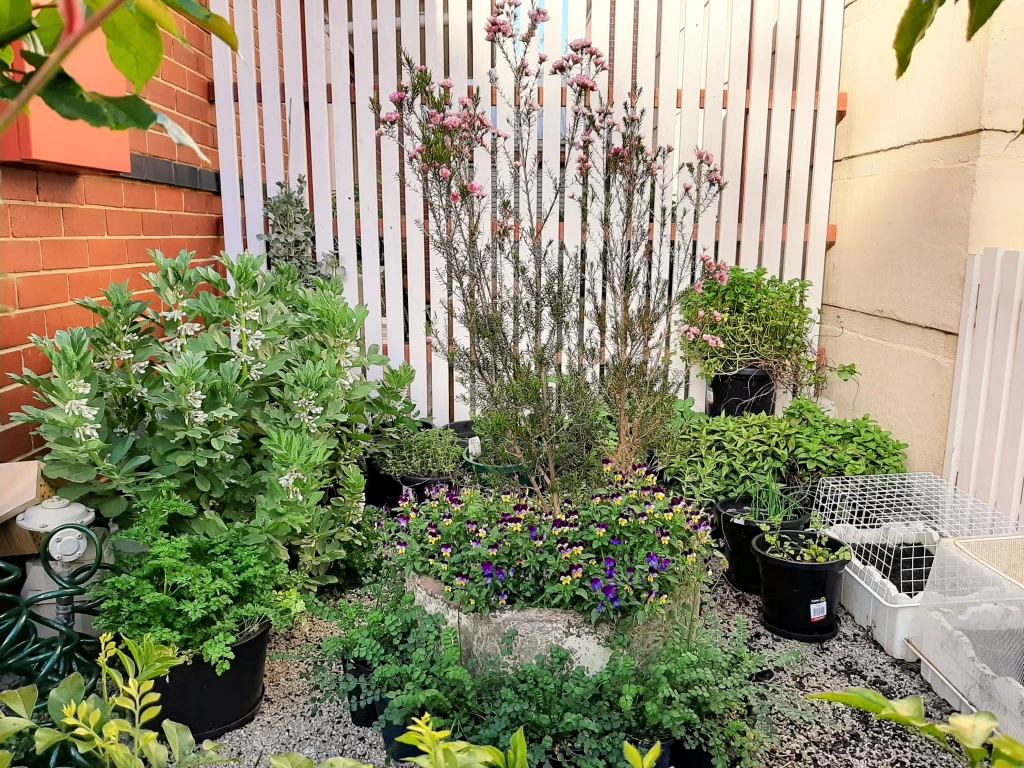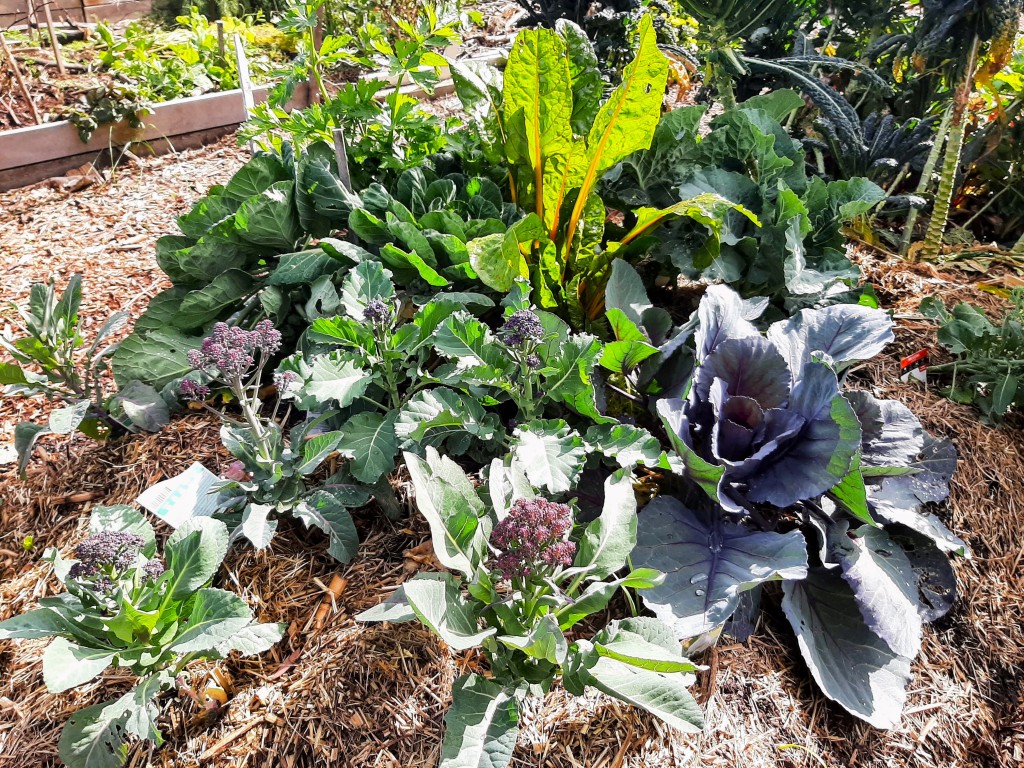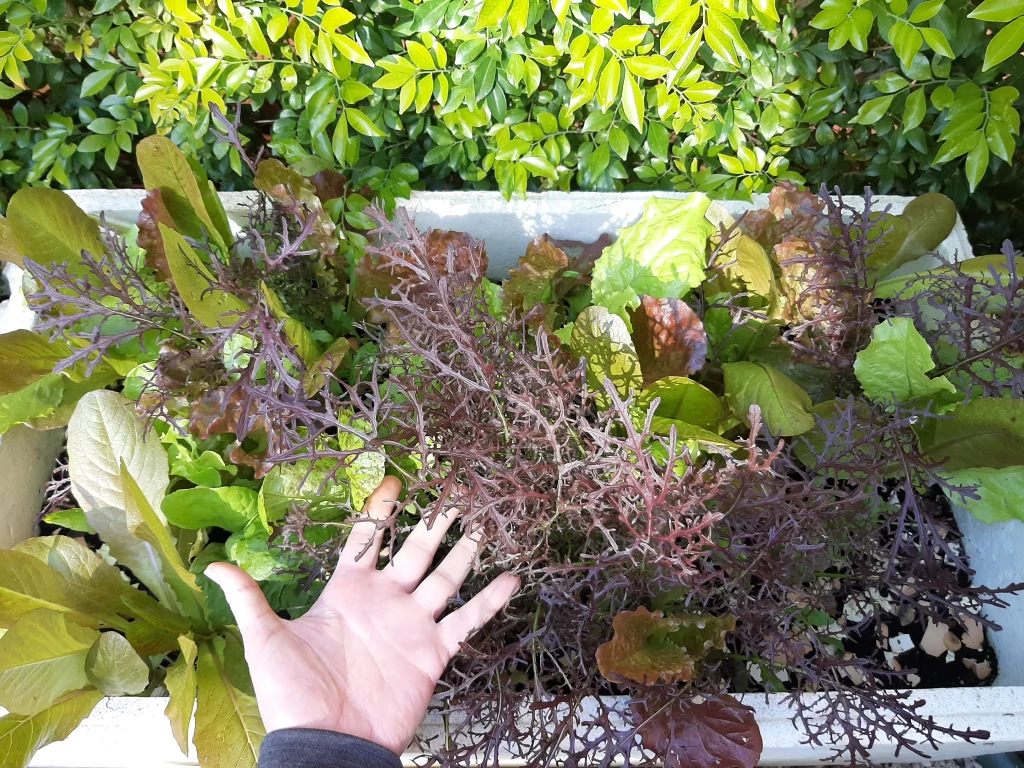The shape of things to come
A brighter future for people and planet
A Just/Joost Solution

We can build sustainability into the way we already do things, or we can push for systemic change. Each approach has it’s strengths and weaknesses, which are important to think through and discuss to work out what kind of future we want to develop.
I’ve made my own attempts at transportable food gardens in rental housing, though nothing close to a closed loop system.
It’s urban agriculture month, marked by the very welcome and much delayed return of warmer, sunnier weather, and a flurry of talks, events and open gardens here in Naarm (Melbourne). Last night I went along to a screening of Greenhouse by Joost, which tells the story of the closed loop exhibition house developed by Joost Bakker from idea to conclusion.
The flagship of Joost’s Future Food System initiative, the greenhouse operates entirely from the food and energy it generates, and is built from fully recyclable or compostable materials designed to suit modern urban spaces and aesthetics. All nutrients and continuously cycled through system elements including aquaculture, composting, biodigestion and worm farming. The surplus worms feed the fish, the fish waste fertilises plants, the fish and plants feed the humans, the human and organic waste provide natural gas for cooking and hot water, and more nutrients for the plants. It’s an ingenious system designed to make us rethink housing design, materials, land use and other big challenges facing large cities.
Watching it though, a little niggle lodged in my brain. Joost’s solutions and innovations – as valuable as they are – remain tied into the culture of the individual. Running a house like the greenhouse means you need , you need:
- To own property, allowing you to design in core elements like solar and battery power, rainwater harvesting, and biodigestion.
- A site with the right conditions (light, orientation, wind protection, climate, etc.) to produce enough food for the inhabitants.
- To have the resources to cover the high upfront costs (offset long-term, but still requiring that initial injection of capital).
- The time to set up and then maintain the system (Joost reckons half an hour a day to maintain it, though you can’t leave it for more than a couple of days and any maintenance skipped needs to be caught up later).
- The skills and time to cook from first principles and feed your household from what you grow, including unfamiliar and high-labour foods.
My local community garden is a wonderland of shared land, skills, tools, time and abilities, with a mix of individual plots and shared plantings, including composting. We’re interconnected among ourselves and keen to expand connection to the neighbourhood around us, recognising that we represent the more privileged and whiter residents.
So how do we take the significant positives of the greenhouse and apply them to urban and suburban neighbourhoods at the scales we need to meet the project’s lofty goals of reducing waste, improving food security, reducing carbon emissions and cooling our cities? Joost himself believes that there are enough people who love gardening who would be willing to grow surplus for others. That may be true, though we lack systems for effective cooperation and redistribution of surplus home produce. That’s a firm goal to work toward.
Trickier yet critical, I think, is developing shared, collaborative systems that push back against this assumption of individual ownership, accountability and action. Solutions for suburbs with socio-economic stress, high rental rates, little private space. Options for those poor in the time, skills, mobility and social networks required for the Joost model to work. Ways of delivering those sweet benefits to the communities with less, by working at the systems scale.
I’m excited to explore approaches that are intersectional and inclusive, that can work for renters and refugees, the time and money poor, the unskilled and excluded, the disabled and the disconnected.
I’m hungry for ideas on more sustainable food systems that incorporate social justice.
What can we take from community gardens and co-ops and expand? Where do we need to be challenging the regulations, structures and funding models that govern property rights and shared urban spaces? What great ideas have you dreamt up or seen in action? What other domains and initiatives can we learn from to challenge the cultural fantasy that everyone can be a stand-alone home owner?
Let’s talk!




Great post!
Something that was mentioned in the film, was setting up biodigestors at the municipal level, rather than at the individual level. This makes sense, as there are major public health risks involved in human manure management, and safety risks in biogas (methane) generation and domestic use.
The good news is that, at least here in Victoria, this is already starting to happen. It’s a good case study in how good policy can generate innovative outcomes. Under legislation, all water corporations in Victoria are required to be carbon neutral by 2035. To achieve this, several water corporations are developing biodigestor systems, both for reticulated sewerage (blackwater) from urban areas, and from industrial and agricultural wastes, like dairy farms. As well as creating gas for use as a power source, they are finding markets for the resulting sludge, which is a fine fertiliser.
That’s an exciting example of closed loop systems operating at scale, where the only contributions of the individual are in paying their water bills and keeping tissues and wet wipes out of the toilet.
There might be a whole additional post in this…